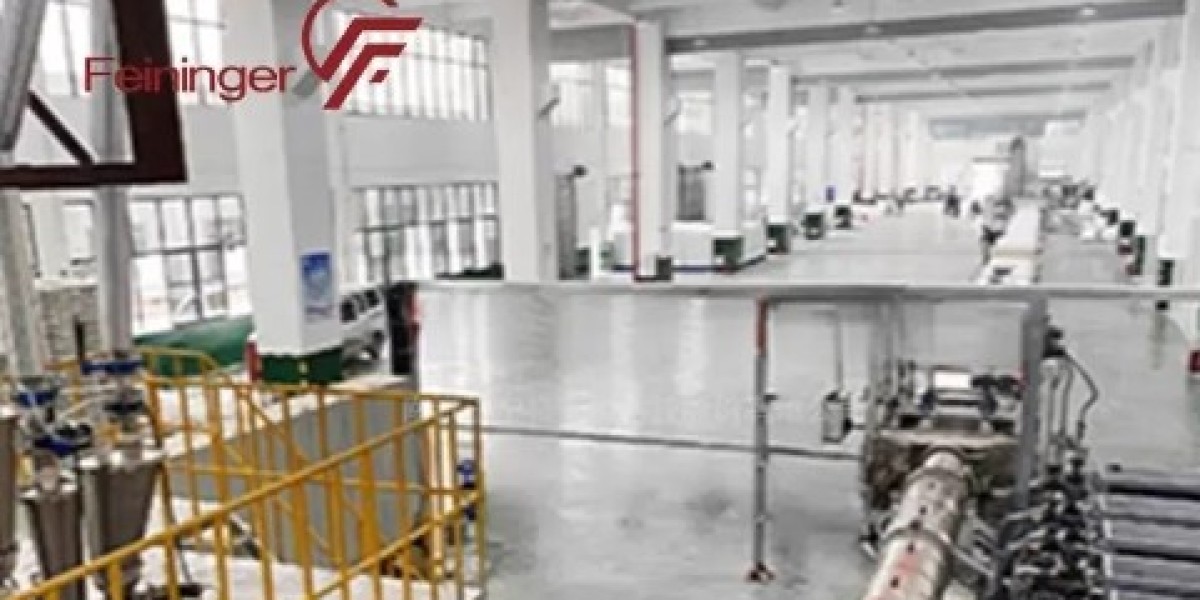The production of PET foam sheets is a sophisticated process that involves advanced technology and precision engineering. PET foam sheets, known for their lightweight, durable, and versatile nature, are used in various industries, including automotive, construction, and packaging. This article provides a detailed breakdown of the PET foam sheet production process, highlighting technological insights, quality assurance, applications, and a comparative analysis of traditional and modern production methods. We'll also spotlight China Feininger, a leader in PET foam sheet production, and how their state-of-the-art production lines set industry standards.
1. Detailed Process Breakdown
Introduction: Brief Overview of PET Foam Sheets and Their Applications
PET (Polyethylene Terephthalate) foam sheets are innovative materials widely used for their excellent mechanical properties and environmental benefits. They are employed in automotive interiors, building insulation, lightweight structural components, and protective packaging, offering a combination of strength, flexibility, and thermal insulation.
Raw Material Preparation
The first step in the PET foam sheet production line involves sourcing and preparing raw materials. PET granules, often recycled, are blended with various additives to enhance the final product's properties. This preparation ensures the right mix for the extrusion process.
Extrusion
In the extrusion phase, the prepared raw materials are fed into an extruder, where they are heated to a molten state. The extruder mixes the materials thoroughly to ensure a homogeneous blend, ready for the foaming stage.
Foaming
Blowing agents are introduced to the molten PET mixture to create a foam structure. This process involves precise control of temperature and pressure to form uniform cells within the foam, giving the PET foam sheets their characteristic lightweight and insulating properties.
Cooling and Shaping
Once the foam structure is created, the material is cooled and passed through rollers to shape it into continuous sheets of the desired thickness. This step stabilizes the foam, ensuring it retains its form and structural integrity.
Cutting and Finishing
The continuous PET foam sheet is then cut into specified dimensions, tailored to meet various industrial needs. Additional finishing processes may include surface treatments to enhance durability and appearance.
Quality Control
Quality control is critical throughout the PET foam sheet production process. China Feininger employs rigorous testing protocols to ensure each sheet meets stringent standards. This includes dimensional checks, visual inspections, and mechanical testing to guarantee product consistency and quality.
2. Technological Insights
Advanced Machinery
The production of PET foam sheets relies on advanced machinery designed for precision and efficiency. Key equipment includes high-performance extruders, sophisticated foaming units, and state-of-the-art cutting machines. China Feininger's production lines are equipped with the latest technology, ensuring high-quality output and optimal performance.
Automation and Control Systems
Modern PET foam sheet production lines utilize automation and control systems to optimize the process. These systems allow for real-time monitoring and adjustments, reducing waste and increasing efficiency. Automation also enhances safety and consistency in production.
Material Science
Innovations in material science have led to significant advancements in PET foam sheet production. Improved raw materials and blowing agents have enhanced the properties of PET foam sheets, making them more durable, lightweight, and environmentally friendly. China Feininger's research and development efforts continue to push the boundaries of material performance.
3. Quality Assurance
Quality Control Measures
Detailed quality control measures are implemented at every stage of production. Testing protocols include:
- Dimensional Checks: Ensuring the sheets meet specific thickness and width requirements.
- Visual Inspections: Detecting surface imperfections and ensuring uniformity.
- Mechanical Testing: Assessing tensile strength, compression resistance, and thermal insulation properties.
Consistency and Standards
Maintaining consistency is crucial for high-quality PET foam sheets. China Feininger adheres to strict production standards, ensuring each batch meets industry benchmarks for performance and reliability.
Certifications and Compliance
PET foam sheets produced by China Feininger comply with international industry standards and certifications. This compliance guarantees that their products meet safety, environmental, and quality requirements, providing customers with assurance and confidence.
4. Applications and Benefits
Industry Applications
PET foam sheets are used in various industries, including:
- Automotive: For lightweight and durable interior components.
- Construction: As insulation panels and structural elements.
- Packaging: Offering protective and cushioning properties for fragile items.
Benefits of PET Foam Sheets
PET foam sheets are preferred for their:
- Lightweight: Reducing overall weight in applications like automotive and aerospace.
- Durability: Providing long-lasting performance in harsh environments.
- Thermal Insulation: Offering excellent thermal properties for energy efficiency.
- Eco-Friendliness: Being recyclable and often made from recycled materials.
Case Studies
Successful applications of PET foam sheets include their use in high-performance automotive interiors, energy-efficient building projects, and protective packaging solutions for sensitive electronics.
5. Comparative Analysis
Traditional vs. Modern Production
Traditional production methods relied heavily on manual processes, leading to inconsistencies and inefficiencies. Modern production lines, like those used by China Feininger, leverage automation, precision engineering, and advanced materials, resulting in higher quality and consistent products.
Competitive Advantages
Advanced production processes provide companies like China Feininger with competitive advantages, including reduced production costs, higher efficiency, and the ability to meet large-scale demands while maintaining high standards of quality.
Global Practices
Production practices vary globally, with advanced economies often leading in technology adoption. China Feininger sets a benchmark with its state-of-the-art production lines, reflecting global best practices in PET foam sheet manufacturing.
Conclusion
The step-by-step process of PET foam sheet production involves a combination of advanced technology, rigorous quality control, and innovative material science. China Feininger, with its cutting-edge PET foam sheet production lines, exemplifies excellence in this field. Their commitment to quality, efficiency, and sustainability ensures that PET foam sheets continue to revolutionize industries worldwide, offering unparalleled benefits and applications.










